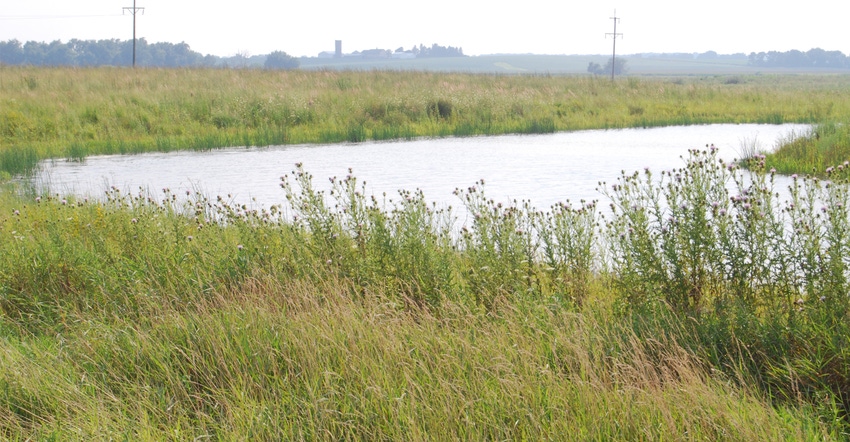January 9, 2019

Farmers in two small Iowa watersheds might be eligible to receive higher-than-normal payment rates on conservation practices that will protect lakes that serve as a drinking water source for the communities of Winterset and Spirit Lake.
The Cedar Lake Watershed in Madison County and the Big Spirit Lake Watershed in Dickinson County were selected by USDA’s Natural Resources Conservation Service to join a group of six existing Iowa watershed projects through the National Water Quality Initiative.
Through NWQI, eligible farmers in the selected watershed receive financial and technical assistance from NRCS to install practices that reduce sediment runoff and trap nutrients before entering lakes, streams, rivers or other nearby bodies of water.
Watershed projects
Iowa’s existing NWQI watershed projects include:
• Badger Creek (Madison County)
• Headwaters Wolf Creek (Lucas and Wayne counties)
• Lost Branch of Chariton River (Lucas and Wayne counties)
• Lower South Fork of Chariton River (Wayne and Appanoose counties)
• Upper South Fork of Chariton River (Wayne County)
• Wall Lake Inlet (Sac and Carroll counties)
Iowa’s two newest NWQI projects are the first in the nation to target source water protection. Source water is defined as drinking water in its original environment, either as surface water or groundwater, before being withdrawn, treated and distributed by a water system.
The city of Winterset receives its drinking water from Cedar Lake, and Spirit Lake receives its drinking water from Big Spirit Lake. Protecting lake source water requires managing the agricultural land and urban areas that drain into it. Farmers in the selected watersheds can choose from a suite of conservation practices such as cover crops, no-till, terraces, nutrient management, water and sediment control basins and bioreactors.
Farmers, communities both benefit
“These protection efforts will save the community money as less water treatment will be needed at the municipal water treatment facility and by increasing the lifespan or improving conditions of the source water,” says Kurt Simon, state conservationist for NRCS in Iowa. “Farmers benefit through lower input costs, enhanced productivity of working lands, and in some cases, more wildlife habitat.”
To implement this initiative, NRCS is coordinating watershed improvement efforts with local water utility boards, local soil and water conservation districts, local and state agriculture agencies and nongovernmental organizations.
Agricultural producers who farm in NWQI watersheds have until March 15 to sign up at their local NRCS office for the next round of funding. NRCS field offices accept program applications on a continuous basis. Learn more about NWQI online.
Source: NRCS, which is solely responsible for the information provided and is wholly owned by the source. Informa Business Media and all its subsidiaries are not responsible for any of the content contained in this information asset.
You May Also Like




